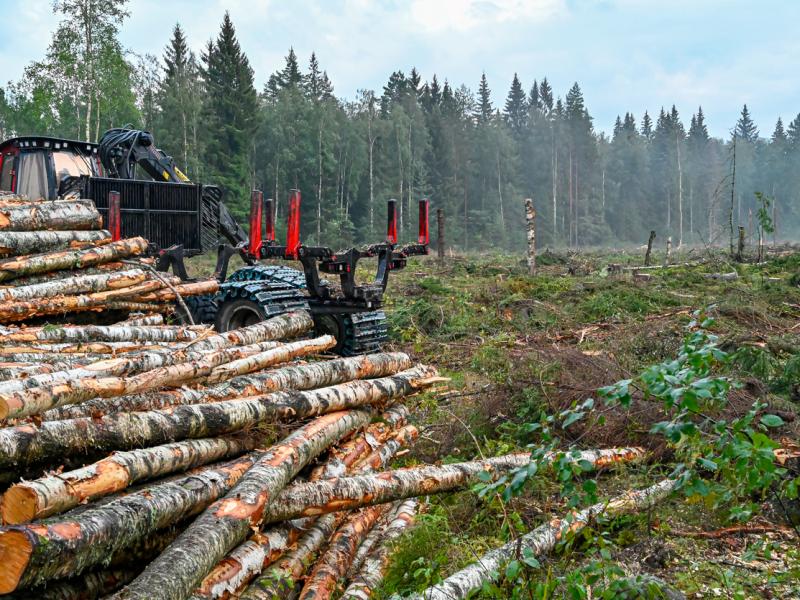The pulp and paper industry is set to face rising demand from the growth in e-commerce and the need for sustainable packaging. But, how can the industry meet this demand in a sustainable way? Here, John Young, APAC sales director at automation parts supplier EU Automation, explains how greater automation can help manufacturers rise to the challenge.
Statista has reported that the pulp and paper industry produces more than 400 million metric tons of material each year. The COVID-19 pandemic has heightened the demand for paper tissues while reducing the demand for office supplies. However, like other industries, it has come under scrutiny for its environmental impact.
The global pulp and paper market is set to grow to USD 368.10 billion by 2027, representing a compound annual growth rate (CAGR) of 0.8 percent. According to Fortune Business Insights, this growth is partly driven by demand from the rise in e-commerce. As a result, there will be a huge drive for eco-friendly packaging material to meet environmental requirements.
Limiting water and energy wastage
The environmental effects of paper production include a large amount of energy usage and water consumption, deforestation, and waste problems. According to The World Counts, 42 percent of harvested wood is used to produce paper, and 26 percent of paper accounts for the total waste at landfills.
For paper to become a sustainable resource, manufacturers need to consider how to reduce their water and energy consumption. So, what practical steps can manufacturers take to tackle these two priority areas? Pulp and paper is one of the largest water-consuming industries. In fact, the Environmental Paper Network reports that the production process for a single piece of A4 paper, requires ten litres of water. To tackle water consumption, industrial facilities in the pulp and paper industry should ensure their machinery is in the best condition.
Manufacturers can achieve this by conducting regular maintenance checks, as well as replacing equipment and components when necessary. To add to this, recycling water is also a good practice. Cutting-edge technologies like distillation filtration, biological treatment, and ion exchange reverse osmosis (RO) could help limit water usage.
Turning our attention to energy usage, manufacturers should switch to renewable energy and sustainable resources as a first step in limiting their environmental impact. Using bioenergy and adopting waste heat recovery technologies, will help reduce energy consumption.
Heat recovery systems have been introduced in pulp processing and pulp drying. For example, the pulp processing of biomass in paper mills stores heat from a boiler. The heat from vessels can be recovered and recycled.
Automation and paper mills
In the pledge to save energy, industry leaders also expect to improve productivity and performance. One way to do this is by turning to automation technologies.
For manufacturers, having to invest in full system overhauls can be prohibitively expensive. Instead, investing in variable speed drives (VSDs) is a great alternative that can save energy and reduce costs. VSDs control the speed and torque of motors and can enhance the machine’s efficiency. By upgrading equipment, it could prevent system damage and wasted energy turning to heat.
Another way of introducing greater automation is through installing sensors and control systems that reduce or optimize energy consumption. These sensors gather real-time information on machine performance, and artificial intelligence (AI) can be used to help machine operators assess how best to reduce energy consumption, by highlighting those areas where energy consumption is excessive.
In larger mills, industrial robots have been deployed for multiple purposes in packaging and label application, handling heavy paper rolls, as well as production testing and inspection.
Automated paper mills have increased productivity by automating some of the menial and time-consuming tasks that would have previously been carried out by human operators. This often has the additional benefit of improving worker safety.
For example, paper and tissue handling plants have integrated robots into their production processes. Machinery has been developed through various stages of the roll finishing process. Applications are controlled by a cell robot, while the head robot is allocated specific tasks in the production line, from manoeuvring heavy paper rolls, to suctioning the ends of the roll with caps. When combined, the robots are used as a core part to the delivery and elevation system.
Automating manufacturing will help manufacturers meet industry demands, and improve the safety, productivity, and energy efficiency in a paper mill. As the pulp and paper industry is set to grow in the next six years, manufacturers should consider how to improve energy efficiency and reduce operation costs through sustainable resources.
Manufacturers can ensure their business is successful, by carrying out regular maintenance checks and by replacing components when necessary. Keeping up to date with the latest technological innovations and developments in sustainable technologies will also give pulp and paper manufacturers a competitive edge. Ultimately, improvements in production levels can be achieved sooner than you think, with the help of a specialist supplier, like EU Automation.
EU automation is a global supplier of new, reconditioned, and obsolete parts. To discover more, visit euautomation.com.






